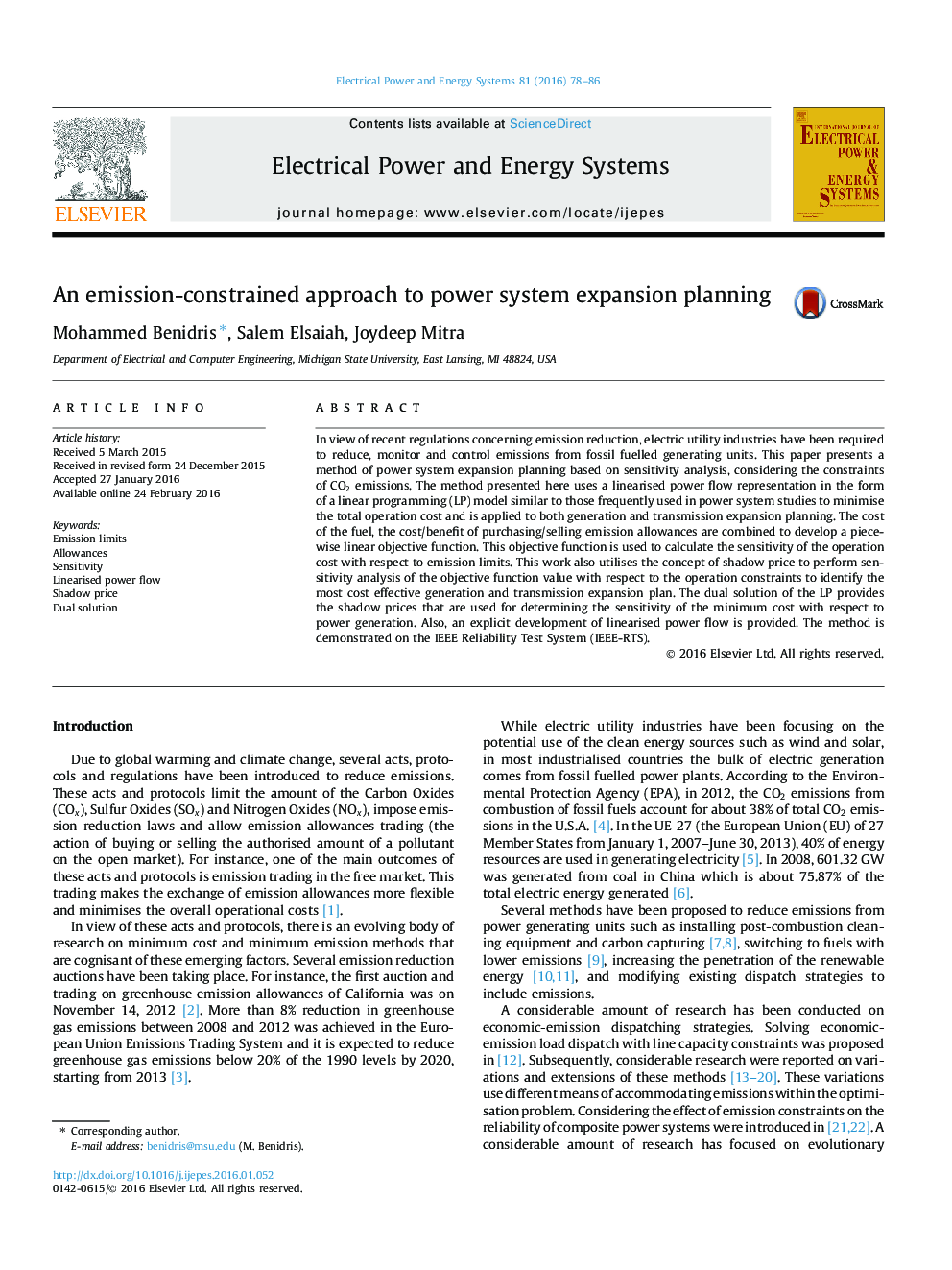| Article ID | Journal | Published Year | Pages | File Type |
|---|---|---|---|---|
| 399164 | International Journal of Electrical Power & Energy Systems | 2016 | 9 Pages |
•Sensitivity analyses considering emission caps and prices.•Determining the best planning options to reduce emissions or stay within the limits.•Proposing two sensitivity indices to determine the best options.•Modelling of a combined economic-emission objective function.•Using a linearised power that is more accurate than DC power flow which is commonly used.
In view of recent regulations concerning emission reduction, electric utility industries have been required to reduce, monitor and control emissions from fossil fuelled generating units. This paper presents a method of power system expansion planning based on sensitivity analysis, considering the constraints of CO2CO2 emissions. The method presented here uses a linearised power flow representation in the form of a linear programming (LP) model similar to those frequently used in power system studies to minimise the total operation cost and is applied to both generation and transmission expansion planning. The cost of the fuel, the cost/benefit of purchasing/selling emission allowances are combined to develop a piecewise linear objective function. This objective function is used to calculate the sensitivity of the operation cost with respect to emission limits. This work also utilises the concept of shadow price to perform sensitivity analysis of the objective function value with respect to the operation constraints to identify the most cost effective generation and transmission expansion plan. The dual solution of the LP provides the shadow prices that are used for determining the sensitivity of the minimum cost with respect to power generation. Also, an explicit development of linearised power flow is provided. The method is demonstrated on the IEEE Reliability Test System (IEEE-RTS).
